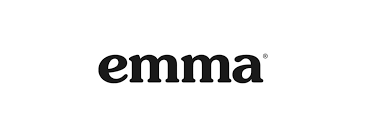Welcome to the ultimate showdown in email marketing tools for 2024 – Moosend vs Emma. If you’re here, it’s likely because you’re on the hunt for a tool that not only simplifies your email marketing efforts but also amplifies them. Whether you’re a small business owner, a digital marketer, or just curious about the latest in email marketing, you’ve come to the right place.
In this article, we’re diving deep into the features, benefits, and nuances of Moosend and Emma. We’ll explore each tool’s unique offerings, giving you a clear picture of which might be the best fit for your specific needs. So, grab a coffee, and let’s get started!
| Moosend | Emma |
|---|---|
 |  |
| G2 Score – 4.6 out of 5 stars | G2 Score – 4.0 out of 5 stars |
| TrustRadius Score – 9.8 out of 10 | TrustRadius Score – 8.6 out of 10 |
Ease of Use
The first aspect we’re going to explore is ‘Ease of Use’. After all, the best tool is the one you can use effortlessly, right?
Moosend – User-Friendly Interface
Moosend is known for its intuitive interface. Right from the get-go, Moosend welcomes you with a dashboard that’s as informative as it is easy to navigate. For beginners, this is a huge plus. You don’t want to spend hours figuring out where everything is.
The drag-and-drop email editor is a standout feature. It’s so straightforward that you can put together a professional-looking email in minutes. This is especially beneficial for small businesses or solo entrepreneurs who might not have a dedicated designer on board.
Moreover, Moosend’s templates are not just plentiful but also diverse. Whether you’re crafting a newsletter, a promotional email, or a simple update to your subscribers, you’ll find a template that fits your needs. This reduces the time and effort spent on creating emails from scratch.
Emma – A Focus on Customization
Emma, on the other hand, takes a slightly different approach. While it also offers a user-friendly interface, its strength lies in customization. Emma’s platform allows you to tailor almost every aspect of your emails, which is a huge plus for brands looking for a unique voice.
However, this customization comes with a bit of a learning curve. It might take a bit longer to get the hang of all the features and how to use them to their fullest potential. But once you do, the possibilities are endless. You can create emails that truly stand out in your subscribers’ inboxes.
Emma also offers a range of templates, but where it shines is in its ability to let users tweak these templates to a great extent. This means you can start with a basic structure and then modify it to align perfectly with your brand identity.
The Verdict on Ease of Use
So, which is better in terms of ease of use? If you’re looking for simplicity and quick setup, Moosend might be your go-to option. Its intuitive interface and straightforward editing tools make it a breeze for anyone, regardless of their technical expertise. It’s particularly ideal for those who want to create attractive, effective emails without investing too much time in learning the software.
On the flip side, if you’re someone who values uniqueness and brand consistency above all, Emma might be more up your alley. The customization options are extensive, allowing for a high degree of control over your email designs. This is perfect for businesses that have a strong brand identity and want their emails to reflect that uniqueness. However, keep in mind that this might require a bit more time and patience to master.
In the end, the choice between Moosend and Emma in terms of ease of use depends largely on your specific needs and preferences. Do you prioritize quick and straightforward email creation, or do you lean towards customizable, brand-specific designs? Your answer to this question will guide you to the right tool for your email marketing campaigns in 2024.
Automation Capabilities
Next up, let’s delve into a crucial feature for any email marketing tool – Automation. In today’s fast-paced digital world, the ability to automate tasks is not just a convenience; it’s a necessity.
Moosend – Automation Made Simple
Moosend excels in making automation accessible and easy to use. Its automation features are designed to cater to both beginners and experienced users, ensuring that everyone can take advantage of this powerful functionality.
One of Moosend’s most notable features is its pre-built automation templates. These templates cover a range of scenarios, from welcome emails to abandoned cart reminders. This means you can set up complex email sequences without having to start from scratch. It’s incredibly time-saving, especially for smaller teams or individuals who might not have the resources to build intricate automation workflows.
Moreover, Moosend allows you to customize these automation workflows to a significant extent. You can set triggers based on subscriber behavior, like opening an email or clicking a specific link, and tailor the subsequent actions accordingly. This level of customization helps in creating a more personalized experience for your subscribers.
Emma – Advanced Automation for Targeted Campaigns
Emma, while also offering robust automation features, tends to lean more towards advanced users. Its automation capabilities are comprehensive, allowing for highly targeted and personalized email campaigns.
One area where Emma particularly shines is in its ability to segment and target subscribers. You can create detailed subscriber profiles based on their interactions with your emails and your website. This data can then be used to tailor your automation workflows more precisely, ensuring that the right message reaches the right person at the right time.
Emma also offers A/B testing within its automation workflows. This feature allows you to test different versions of your emails and see which performs better. It’s a powerful tool for optimizing your email campaigns and ensuring that your automation strategies are as effective as they can be.
Automation: The Bottom Line
When it comes to automation, both Moosend and Emma offer strong capabilities, but they cater to different needs. Moosend is great for those who want a straightforward, easy-to-use platform with enough flexibility to create effective automated campaigns. It’s particularly suited for small to medium-sized businesses or individuals who need efficiency without complexity.
Emma, however, is more suited for those who require advanced targeting and segmentation capabilities. Its detailed subscriber profiling and robust A/B testing features make it ideal for larger businesses or those with a more complex subscriber base. If you’re looking to dive deep into automation and have the resources to manage it, Emma could be the better choice.
Analytics and Reporting
Moving on, let’s talk about Analytics and Reporting. In email marketing, understanding how your campaigns perform is critical. It’s not just about sending emails; it’s about measuring their impact, learning from the results, and improving future campaigns.
Moosend – Straightforward and Actionable Insights
Moosend offers a comprehensive analytics suite that’s both powerful and user-friendly. The platform provides real-time reporting, allowing you to track the performance of your campaigns as they unfold. This includes basic metrics like open rates, click-through rates, and unsubscribe rates, which are essential for gauging the success of your emails.
Where Moosend really stands out is in its ability to present data in an easily digestible format. The dashboard is clean and intuitive, making it simple to understand your campaign’s performance at a glance. This is particularly beneficial for smaller teams or individuals who need to make quick, data-driven decisions without getting bogged down in complex analytics.
Another handy feature of Moosend is its ability to track user behavior on your website post-click. This means you can see not just how users interact with your emails, but also what they do once they land on your site. Such insights are invaluable for understanding the full impact of your email campaigns.
Emma – In-Depth Analysis for Data-Driven Marketers
Emma, on the other hand, takes a more in-depth approach to analytics and reporting. The platform offers all the standard metrics you’d expect, but it goes a step further by providing more detailed insights into subscriber behavior and campaign performance.
One of the standout features of Emma’s analytics is its comparative reports. You can compare the performance of different campaigns side by side, which is a powerful tool for understanding what works and what doesn’t in your email strategy. This level of detail is particularly useful for larger businesses or those with a more sophisticated approach to email marketing.
Emma also offers robust segmentation capabilities within its analytics. This means you can drill down into specific subscriber segments to see how different groups are responding to your emails. Such granular data can be a goldmine for tailoring your campaigns to different segments of your audience.
Analytics and Reporting: Making the Right Choice
In terms of analytics and reporting, both Moosend and Emma have their strengths. Moosend is great for those who need straightforward, actionable insights without the complexity. Its user-friendly interface and real-time reporting make it easy to track campaign performance and make quick adjustments.
Emma, however, is the better choice for those who want a deeper dive into their analytics. Its comparative reports and detailed segmentation data provide a level of insight that’s well-suited for more sophisticated email marketing strategies. If you’re a data-driven marketer who loves to analyze and optimize, Emma will likely meet your needs more effectively.

Related: Check out our free SEO suite

Integration Capabilities
A key aspect of any email marketing tool is its ability to integrate seamlessly with other software. In this section, we’ll compare Moosend and Emma in terms of their integration capabilities, which can be a game-changer for many businesses.
Moosend – Wide Range of Integrations
Moosend offers an extensive range of integrations with various third-party applications and services. This makes it an attractive option for businesses that rely on a diverse set of tools for their operations. From CRM systems and eCommerce platforms to social media and analytics tools, Moosend covers a broad spectrum.
The ease of integration is another strong point for Moosend. Most integrations are straightforward and don’t require extensive technical knowledge. This is particularly advantageous for small businesses or individuals who might not have a dedicated IT team. With Moosend, integrating your email marketing campaigns with your existing tech stack can be done with minimal fuss.
Another notable aspect of Moosend’s integrations is the Zapier connection, which opens up a world of possibilities. Zapier allows you to connect Moosend with thousands of other apps, even if there’s no direct integration available. This level of connectivity ensures that Moosend can fit into almost any business’s existing workflow.
Emma – Focused and Deep Integrations
Emma, while offering fewer integrations than Moosend, focuses on deeper, more specialized connections. This means that while the list of integrations might not be as extensive, the integrations they do offer are often more robust and tailored.
For businesses that rely heavily on specific platforms, such as Salesforce or Shopify, Emma’s deep integrations can be a major advantage. These integrations are not just about sharing data; they’re about creating a seamless workflow between Emma and the other tools you use. This can lead to more efficient processes and a more cohesive user experience.
Additionally, Emma’s API is another point of strength. For businesses with the capability to develop custom integrations, Emma’s API provides the flexibility to create bespoke connections that fit exactly with their needs. This is particularly valuable for larger businesses or those with unique requirements that off-the-shelf integrations can’t meet.
Integration Capabilities: Choosing What Works for You
When it comes to integration capabilities, your choice between Moosend and Emma will largely depend on your specific needs. If you’re looking for a tool that offers a wide range of integrations and easy connectivity, Moosend is likely the better choice. It’s ideal for those who use a variety of platforms and want an email marketing tool that can easily fit into their existing ecosystem.
If, however, you require deeper, more specialized integrations, particularly with platforms like Salesforce or Shopify, Emma might be the way to go. Its focused approach to integrations ensures that you get more than just data sharing – you get a tool that truly complements and enhances your existing software setup.
Customer Support and Resources
An often-overlooked but crucial aspect of choosing an email marketing tool is the quality of customer support and the availability of resources for learning and troubleshooting. Let’s compare Moosend and Emma on these fronts.
Moosend – Accessible Support and Extensive Resources
Moosend is known for its accessible customer support. Users have access to a range of support options including email, live chat, and phone support. This multi-channel approach ensures that you can get help in the way that suits you best. Particularly for small businesses or solo entrepreneurs, having readily available support can be a lifesaver.
In addition to its customer service, Moosend offers a wealth of resources for users. This includes an extensive knowledge base, video tutorials, and regular webinars. These resources are not just about troubleshooting; they also provide valuable insights into best practices in email marketing, helping users to continually improve their strategies.
Another significant aspect of Moosend’s support is the community forum. Here, users can share tips, ask questions, and learn from each other’s experiences. This sense of community can be incredibly beneficial, especially for those who are new to email marketing.
Emma – Personalized Support and Advanced Resources
Emma takes a slightly different approach to customer support. While they also offer multiple channels for support, including email and live chat, their focus is on providing more personalized assistance. This is evident in their dedicated account management for certain plans, where users get direct access to a specialist who understands their specific needs.
The resources offered by Emma are also noteworthy. They provide in-depth guides and case studies that delve into advanced email marketing strategies. For businesses that are looking to take their email campaigns to the next level, these resources can be invaluable.
Moreover, Emma hosts a series of workshops and training sessions that are designed to help users get the most out of their platform. These sessions are not just about using Emma; they also cover broader email marketing strategies and best practices.
Customer Support and Resources: Making Your Choice
In choosing between Moosend and Emma based on customer support and resources, consider your own preferences and needs. If you value having a variety of support options and a wealth of easily accessible online resources, Moosend is a great choice. It’s particularly suited for those who prefer self-service support or are looking for a community of users to engage with.
On the other hand, if you prefer more personalized support and are interested in advanced learning resources, Emma might be the better option. Their approach to customer service and the depth of their resources make them ideal for businesses that want a more hands-on support experience and in-depth knowledge to enhance their email marketing strategies.
Pricing and Value for Money
An essential factor for any business when choosing an email marketing tool is the pricing structure and the value for money that the tool offers. Let’s compare Moosend and Emma in terms of their pricing and what you get for your investment.
| Moosend | Free Plan: Offers access to basic features for up to 1,000 subscribers, including email campaigns, automation, and landing pages. Pro Plan: Pricing starts at $8 per month for up to 2,000 subscribers, with unlimited emails. Includes advanced features like transactional emails, landing page builder, and phone support. The price scales with the number of subscribers. Enterprise Plan: Custom pricing for businesses needing custom features like account management, SSO (Single Sign-On), and more. |
| Emma | Pricing is typically tiered based on features and list size: Pro Plan: Offers automation, segmentation, and analytics. Pricing usually starts at around $89/month. Plus Plan: Includes additional features like landing pages and A/B testing. Pricing is higher and usually requires a quote from Emma. Enterprise Plan: Custom pricing for advanced needs like custom integrations and dedicated support. |
Moosend – Affordable and Scalable Pricing
Moosend is often praised for its affordable pricing model, making it a popular choice for small to medium-sized businesses and startups. The platform offers a free plan with basic features, which is a great way to get started without any financial commitment. This free plan is particularly appealing to those who are new to email marketing and want to test the waters before investing.
As your needs grow, Moosend’s pricing scales with your business. The paid plans are based on the number of subscribers, and they offer a range of advanced features like landing pages, transactional emails, and automation. This scalability ensures that you can continue to use Moosend as your business expands, without having to worry about a significant increase in costs.
Another advantage of Moosend’s pricing is the transparency. There are no hidden fees, and you get a clear understanding of what you’re paying for. This clarity is crucial for businesses that need to budget carefully and want to avoid unexpected expenses.
Emma – Premium Pricing for Advanced Features
Emma, on the other hand, is positioned as a more premium option in the email marketing tool market. The pricing is higher than Moosend, but it’s justified by the advanced features and personalized support that Emma offers.
The platform is designed for businesses that are looking for a comprehensive email marketing solution with sophisticated segmentation, automation, and analytics capabilities. The pricing reflects the advanced nature of the tool and the value it provides, particularly for larger businesses or those with more complex email marketing needs.
Emma also offers custom pricing plans for businesses with unique requirements. This means that if the standard plans don’t quite fit your needs, Emma can tailor a plan specifically for your business. This level of customization in pricing ensures that you’re getting exactly what you need without paying for unnecessary features.
Pricing and Value for Money: Your Decision
When deciding between Moosend and Emma based on pricing and value for money, consider the size of your business and your specific needs. Moosend is a great option for those who are looking for an affordable, scalable solution. It’s ideal for startups and smaller businesses that need a powerful email marketing tool without a hefty price tag.
Emma, however, is more suited for businesses that require a more advanced set of features and are willing to invest more in their email marketing platform. The higher price point is offset by the premium features and personalized support, making it a worthwhile investment for businesses that need these advanced capabilities.
Conclusion
In the dynamic world of email marketing, choosing the right tool is pivotal for the success of your campaigns. Our comprehensive comparison of Moosend and Emma has covered various aspects, including ease of use, automation, analytics, integration capabilities, customer support, and pricing. Moosend emerges as a strong contender for those seeking an affordable, user-friendly platform with a wide range of integrations. It’s ideal for small to medium-sized businesses or startups looking for a scalable solution that combines ease of use with robust automation and analytics features. The platform’s straightforward pricing and extensive resources make it a great choice for those entering the world of email marketing or for those who prioritize simplicity and efficiency.
Emma, on the other hand, caters to businesses looking for a more sophisticated, feature-rich email marketing solution. With its advanced automation capabilities, in-depth analytics, and focused integrations, Emma is tailored for larger businesses or those with specific, complex needs. The platform’s emphasis on personalized support and advanced learning resources justifies its premium pricing, making it a valuable investment for businesses seeking a comprehensive, high-end email marketing tool. Ultimately, your choice between Moosend and Emma will depend on your specific business needs, budget, and the level of complexity you’re comfortable with. Both platforms offer unique strengths, and the best choice is the one that aligns most closely with your email marketing goals and resources.
Read next:





















